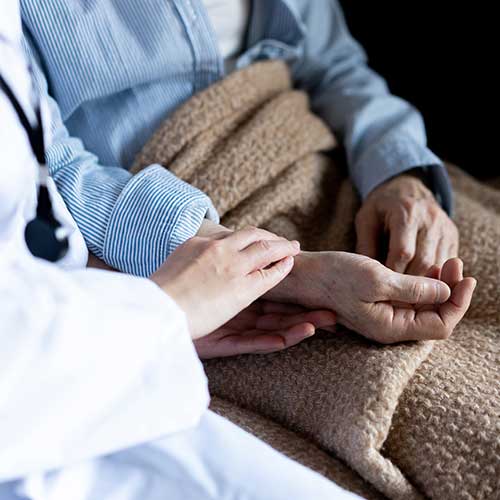November 2019
Nothing brightens the face of a hospital patient like the moment the doctor tells them they can go home. As a family member, you’re also happy and relieved, knowing your loved one’s condition has improved enough for discharge.
But before you leave with your loved one, make sure you understand how to help him or her transition successfully from hospital care to recovery at home. To prepare you for what comes next, a hospital staff member will explain the discharge plan.
Here’s a brief guide to understanding what a discharge plan is and how your role as a caregiver is key in ensuring the plan is followed.
What is hospital discharge planning?
The Family Caregiving Alliance describes hospital discharge planning as a process that includes evaluating patients, discussing their condition and care, arranging for follow-up appointments and tests, determining the need for family caregiver training and making referrals to home care services and other sources of support. A social worker, nurse, case manager or other hospital care provider may handle discharge planning, although a doctor must authorize the discharge itself.
What is my role as a caregiver?
As the designated family caregiver, you’ll probably receive a list of the doctor’s orders. But you also need to be involved in the discussion of what it will take to help your family member get well at home. Because you already know what the home environment is like, you know what changes may be necessary to meet your loved one’s needs. You can also assess which caregiving duties you can perform yourself and which ones you can’t. For example, maybe you’re not physically able to lift your family member, or you’re not comfortable providing bathing or toileting assistance.
The time to speak up about these concerns is before you leave the hospital. The discharge planner can help you figure out a solution, like perhaps sharing caregiving responsibilities with other relatives and volunteers, or bringing in a professional home care provider. They may also offer training for some of the more challenging caregiving tasks, such as cleaning and dressing a wound or giving an injection.
What should I ask before we leave the hospital?
You’ll likely leave the hospital with a thick packet of information about the patient’s medication schedule, any restrictions on diet or activities, home exercises for physical rehabilitation and the like. But it doesn’t hurt to prepare a list of questions, so you can ask for further explanations or address additional topics or concerns.
Pay special attention to any changes to the medication regimen your family member was following before entering the hospital. Ask if you’ll need to acquire special equipment, such as a wheelchair, walker or bedside commode, and whether your loved one is eligible for any assistance to pay for it. Learn what to expect for your loved one’s physical condition and progress, so you’ll know what’s normal, and what might signal a problem. Get a name and number to call if you have concerns.
Medicare.gov offers a print-ready discharge planning checklist that includes several items specifically for caregivers. The entire document can be a handy resource for patients and family members.
What is the hospital’s responsibility?
The Agency for Healthcare Research and Quality, which is part the U.S. Department of Health and Human Services, created a best-practices guide for discharge planning using the acronym IDEAL. You should expect the hospital’s staff to follow these guidelines when they discharge your loved one:
- Include the patient and family in the process
- Discuss key areas for preventing problems at home
- Educate the patient and family about the patient’s condition
- Assess how well caregivers can explain the patient’s condition and next steps
- Listen to and honor the patient’s and family’s goals and concerns
By being an engaged participant in the discharge process, you help ensure those standards are met. It’s an essential step to putting your loved one on the road to better health when you take them home.



